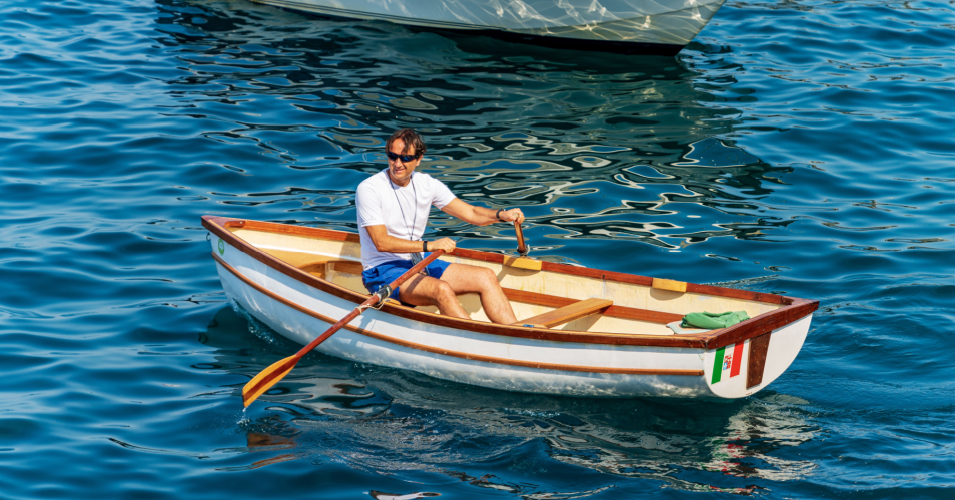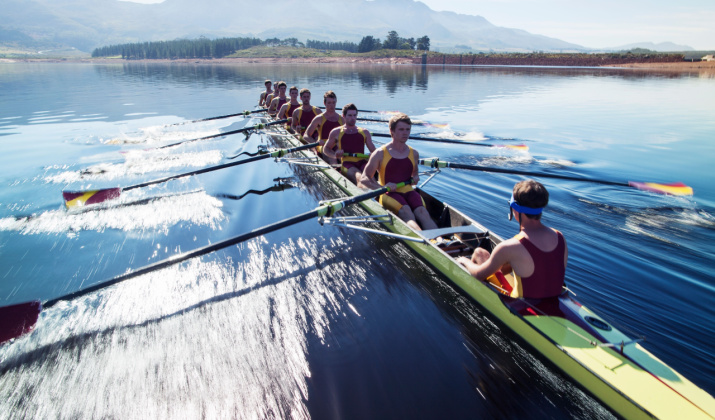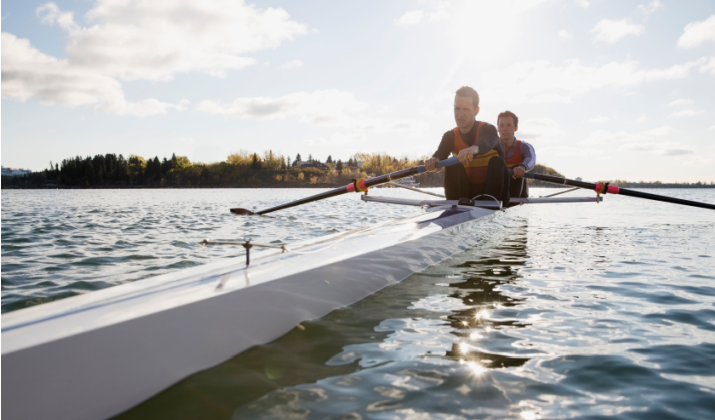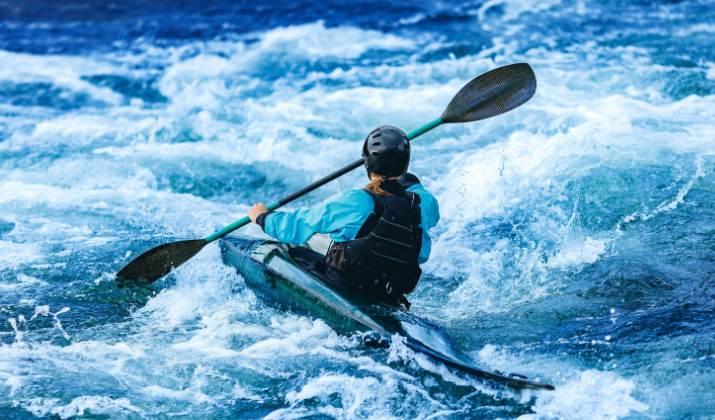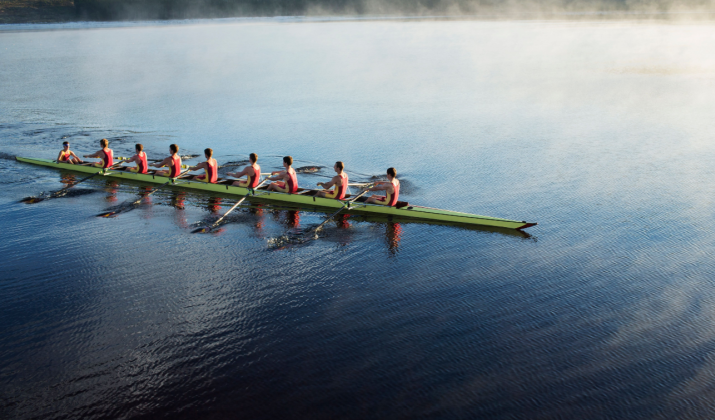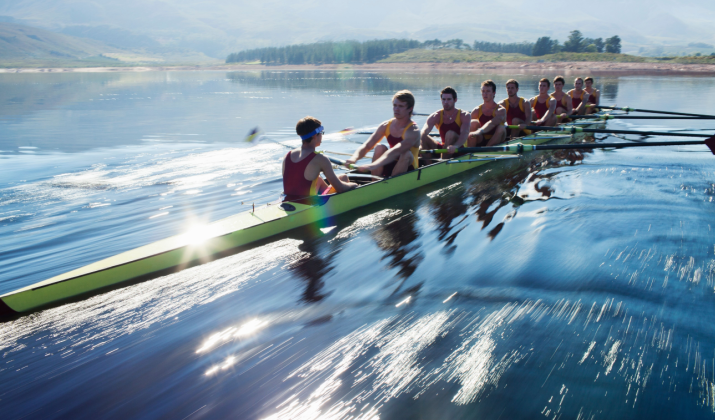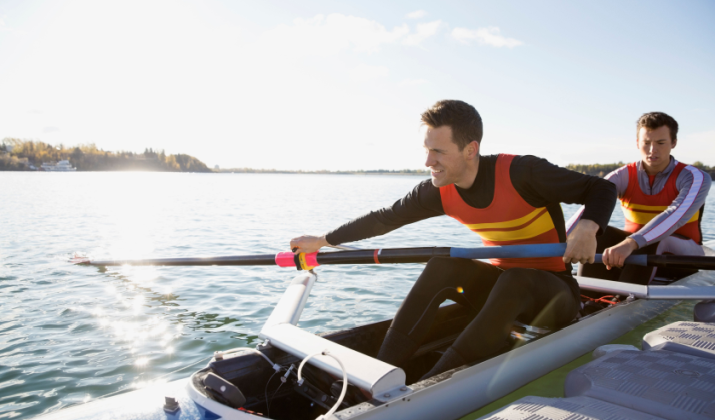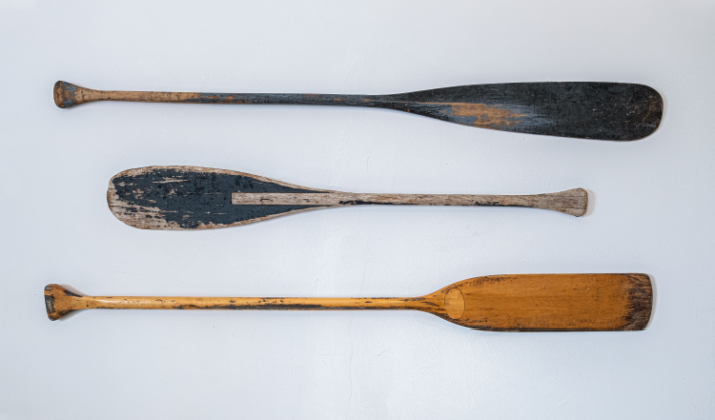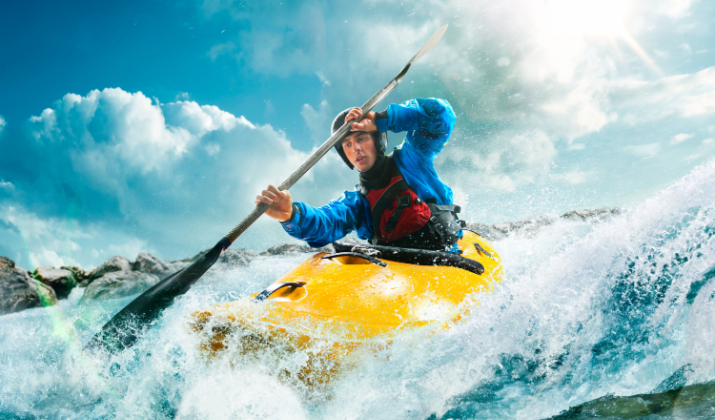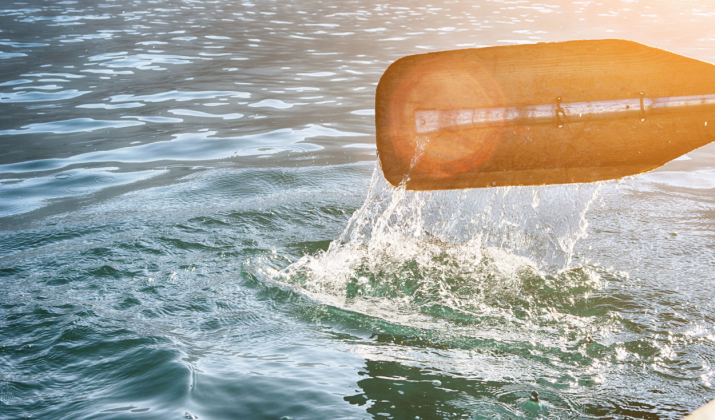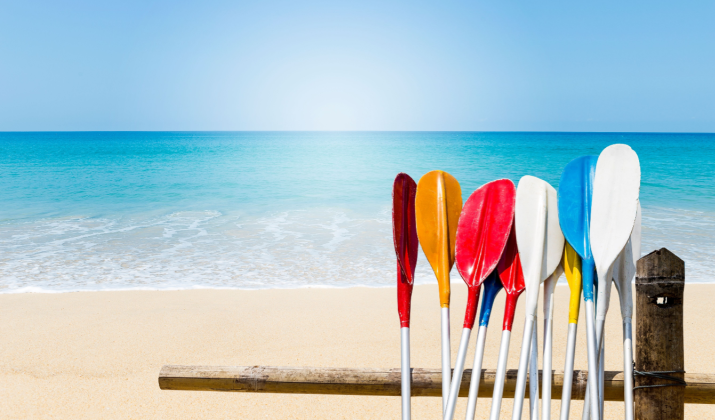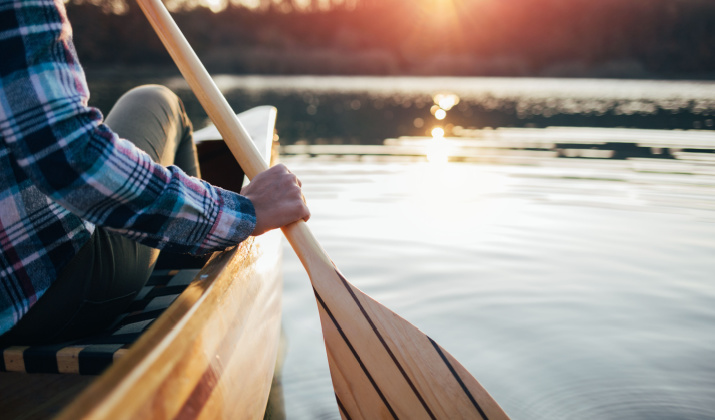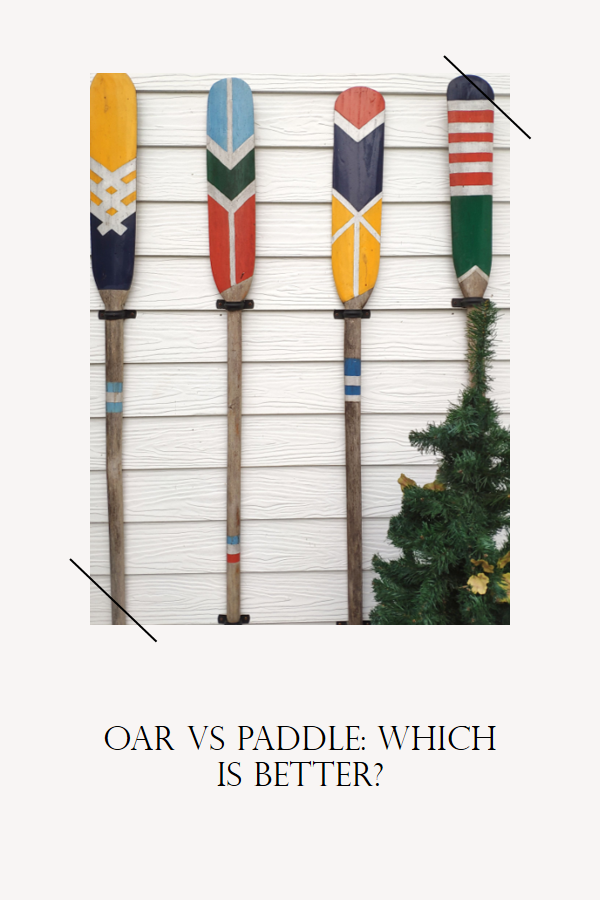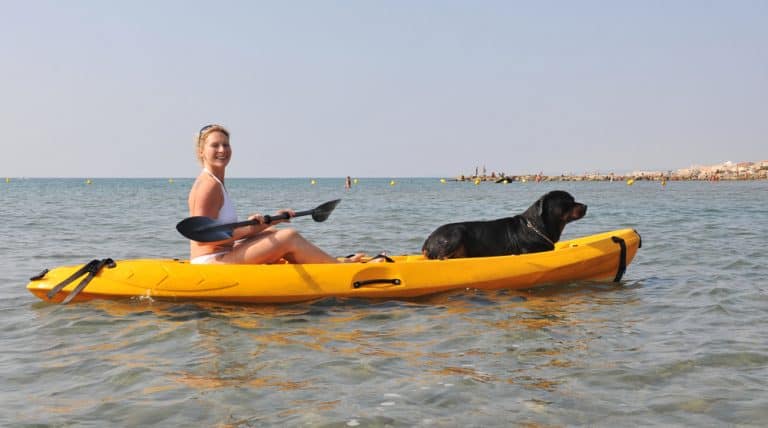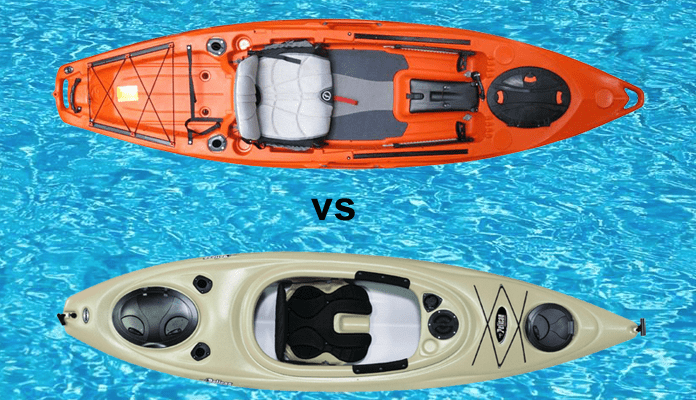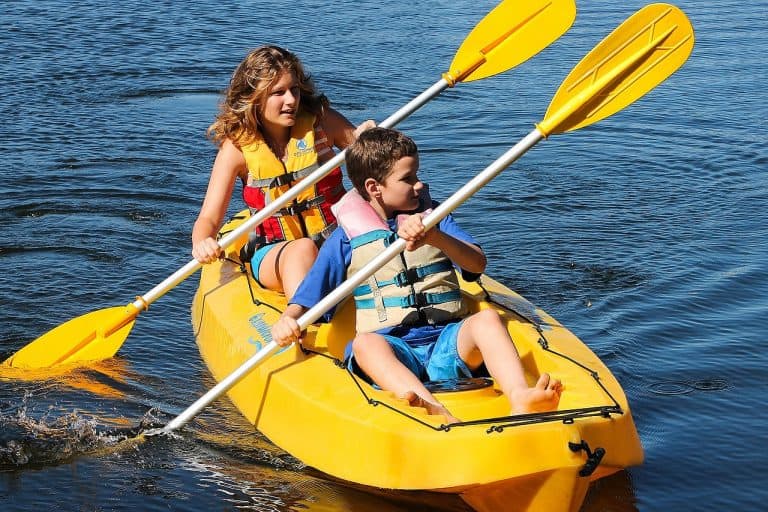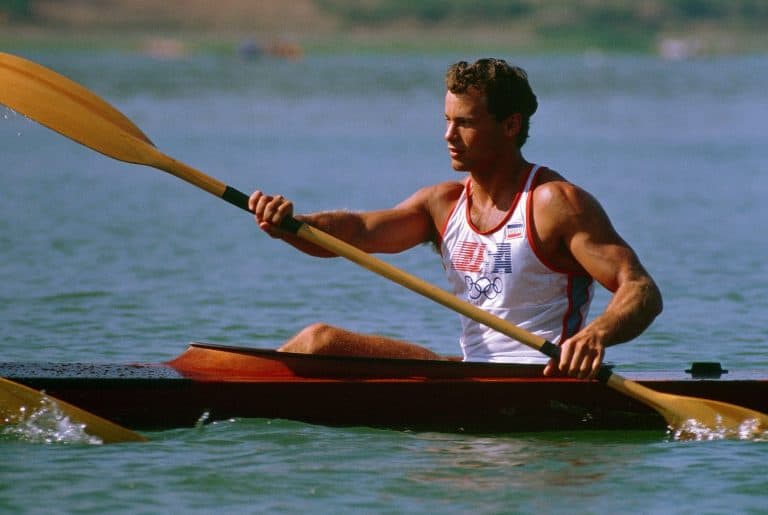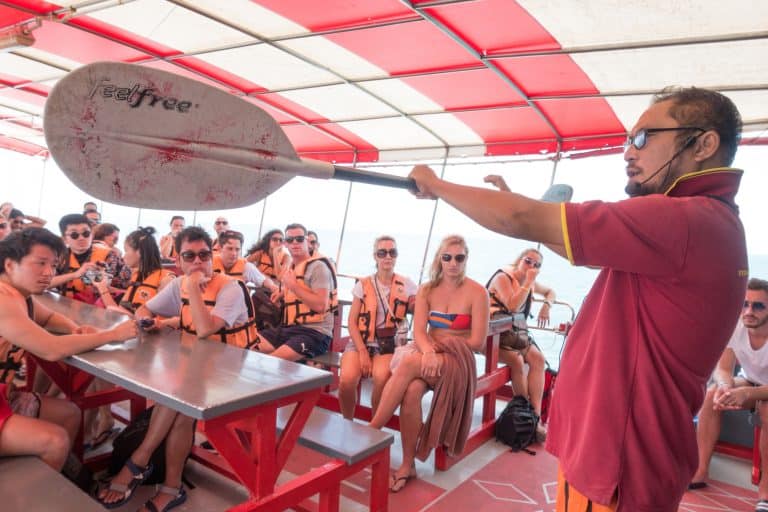Oars and paddles are two commonly used devices for maneuvering watercraft. Kayakers use paddles, but what are oars, and how are they different from paddles?
While paddles and oars look similar at first glance, they are distinct pieces of equipment and are used for different purposes.
Today, we will be going over the differences between paddles and oars. If you’re confused as to which one you should buy, read this guide.
Quick Summary
Oars are typically used for rowboats, while paddles are used for kayaks and canoes.
Here are the main differences between the two:
- Oars propel you backward, while paddles propel you forward.
- Oars are attached to the vessel, while paddles are not and are held in your hand.
- Oars have just one blade, while paddles can have one or two blades.
- You can use either one or two oars at a time, while you always use one paddle.
- Oars work out your legs and back, while paddles work out your torso.
- Rowers often row with many people, each with their own oar(s), while kayakers usually either paddle alone or with just one other person.
To learn more about the differences between oars and paddles, read on!
Oars vs Paddles – The Differences
Which Vessels They Are Used For
Image Source : Shutterstock
Oars are typically used for rowboats, including sculls and sweep rowing boats.
However, paddles are typically used for kayaks, canoes, rafts, and SUPs (stand up paddleboards).
The two types of vessels have very different purposes. Rowboats are long and narrow and optimized for speed, allowing you to row down a stream in minimal time.
Meanwhile, kayaks come in all shapes and sizes, but they often prioritize stability.
Thus, you will see many kayaks that are wider than your typical rowboat, although some are narrow as well. For example, there are kayaks designed as playboats, allowing you to perform tricks and interesting moves in the water.
A playboat is a type of whitewater kayak, but this is just one category of kayaks.
Image Source : Shutterstock
Another category, for example, is the fishing kayak, while yet another category is the touring kayak.
Fishing kayaks are designed for anglers who want to catch fish, whether large or small. Therefore, stability is particularly prioritized for fishing kayaks, as anglers often need to stand on the deck and maintain their posture and stability while hauling in a big fish.
The seats in kayaks are typically fixed in one place, allowing someone to enjoy a day out on the water. In fact, kayaking is great for a relaxing day trip with your family, while rowing is better suited for a strenuous workout, as it requires a lot of energy.
Meanwhile, rowboats often have seats that slide backward and forward. That allows rowers to use the power of their legs to row the boat.
In addition, rowboats can accommodate many rowers at once – eight people in a rowboat is not uncommon. However, most kayaks only accommodate one person, while tandem kayaks accommodate two; some kayaks may accommodate more, but these are not the norm.
To learn more about the two sports, read our guide on the differences between rowing and kayaking.
How Are They Held?
Image Source : Shutterstock
Oars are usually attached to rowboats via oarlocks, which lock the oars in place and make it easier for the rowers to row.
Paddles, on the other hand, are not attached to the kayak. Instead, they are held entirely by the paddlers.
Image Source : Shutterstock
Of course, some kayaks have paddle holders, which allow you to store your paddles when not in use. This makes it easy to anchor yourself and relax without worrying about your paddles falling off your kayak and into the water.
However, while paddling, you hold the paddles in your hand.
How Do They Propel the Boat?
Image Source : Shutterstock
There’s another major difference between oars and paddles, and that’s how they propel the boat.
Paddles propel your boat forward. You can see where you are going when paddling.
However, the way oars work is exactly the opposite. Oars propel your boat backward, or at least, backward relative to your seating position.
In other words, it propels the boat in the opposite direction of which you are facing. Rowers typically face the stern, or rear of the boat, and their backs are towards the bow, the front of the boat.
Meanwhile, kayakers face the bow of the kayak.
Check out our guide to the anatomy of a kayak for more information about the bow, stern, and other parts of a kayak.
You may wonder how rowers can see where they are going. The answer is that rowers get good at looking backward every few strokes.
Usually, rowers will look to the side while rowing, and their peripheral vision will help them see if there is an object, such as another boat or a tree, that they might hit.
A rower might do a side look on every third and fourth stroke, for example. However, peripheral vision has its limitations.
Therefore, every few strokes, rowers will look behind them completely. Every rower is different; some are trained to do this every 10 strokes, for example, while others may do it a bit less frequently.
A good rower will know what works for him or her. This knowledge is gained through experience.
Sometimes, there will be one person facing the other way, just to keep a lookout.
Image Source : Shutterstock
Additionally, some rowers use mirrors to help them look behind themselves. Mirrors can be attached to the rowboat itself, sort of like a car or motorcycle mirror.
Another option is a mirror that attaches to the rower’s cap or hat. This type of mirror often allows rowers to get a good idea of what is going on behind them.
While mirrors may not completely replace the need to take a good look backward every now and then, they can help prevent collisions.
Another question that seems obvious is, Why in the world do rowers row backward? It doesn’t seem to make much sense at first, since it limits vision.
The answer will come in the next section, so read on!
Which Muscles They Work Out?
Rowing with oars is an intensive exercise that usually works out the legs, arms, and back. Meanwhile, paddling with a paddle typically works out the core and torso muscles, such as your abs.
That’s because of the way the oars and rowers are positioned. When you row backwards, you work out your legs and back.
Your legs and back are typically very strong, which is why you can typically squat a lot more than you can bench press. This extra strength allows rowers to row even faster; remember, rowboats are all about speed.
Kayakers, though, paddle forward. This allows them to work out the arms and torso muscles.
Kayaking is a great exercise, but rowing is a lot more strenuous and difficult. It will typically burn more calories than kayaking, while kayaking is a bit more chill and laid back overall.
If your goal is exercising while enjoying yourself, I recommend kayaking. Rowing is great, but it can be pretty tough on your body.
Kayaking does work out a lot of muscles in your body, though, and it also burns a lot of calories.
There are ways to increase the intensity as well, such as by adding more weight to your kayak, kayaking in more challenging waters, kayaking upstream, or simply paddling faster.
Thus, kayaking is very versatile and can be a great workout for every occasion, whether you want an easy, laid-back workout or an intense cardio session.
How Many of Them Do You Need: One or Two?
Image Source : Shutterstock
Oars are typically used alone or in pairs. If a rower is using just one oar, it is called sweeping. If a rower is using two oars, it is called sculling, and that type of rowboat is called a scull.
Sculling is very common, with rowers using one oar on either side of the boat. A lot of rowers start with sculling, because it tends to be easier on the body due to the symmetrical nature of it.
Since you are using two oars instead of one, you may also find yourself moving faster.
Ultimately, though, they are two different things, and people have their own preferences regarding which one they prefer.
Paddling, on the other hand, involves just one paddle. You always use one paddle, regardless of whether you are paddling a kayak or canoe.
How Many Blades Do They Have?
Image Source : Shutterstock
Oars have just one blade on one end. That is why many people prefer using two oars (sculling), because it allows them to use two blades.
The other end of the oar is held by the rower. Remember, it is attached to the vessel.
Paddles, on the other hand, can be single- or double-bladed.
Image Source : Shutterstock
Single-bladed paddles have a blade on just one end. Double-bladed paddles are longer and have blades on both ends.
While double-bladed paddles may help you move faster in the water, single-bladed paddles have advantages as well. For example, when you need to make tight maneuvers in tight spaces, a single paddle will be better.
That’s why some kayakers carry both types of paddles with them, so they can switch back and forth as needed. Some paddles come in pairs and can be converted into one double-bladed paddle by attaching the ends of the two single-bladed paddles.
Materials They Are Made Of
Image Source : Shutterstock
Oars have traditionally been made of wood (both the shaft and the blade). Nowadays, though, many oars, including both the shaft and blade, are made of synthetic materials.
These synthetic materials are cheaper to produce and also a lot lighter, making it easier to row.
Kayak paddles are also made of a variety of synthetic materials, such as carbon fiber and fiberglass. Aluminum and wood are options, but they are not generally preferred.
Paddles come in all forms. For example, some have a bent shaft that allows for a more natural grip and reduces fatigue.
Check out our guide to buying a paddle for more information.
Kayak paddles are also very versatile. There are many types of kayak paddles, such as paddles with feathered blades and paddles with asymmetric blades.
Feathered blades have different angles and can help you paddle with less effort in windy conditions.
Kayak paddles also often come in two, three, or even four pieces. That allows you to take apart the paddle and store it in a bag during transport.
Can You Use an Oar for Kayaking?
Image Source : Shutterstock
Using an oar for kayaking isn’t impossible, but it won’t be easy. In fact, you will likely find it incredibly awkward and difficult.
Oars are longer than paddles and specifically designed to be used in oarlocks. If you try to use an oar in a kayak, you will find it awkward, especially if you are in a sit-in kayak as opposed to a sit-on-top kayak, which provides a bit more space between you and the water.
Oars are designed for fast speeds, but they’re not that great for quick turns and other maneuvers. That’s why kayakers use paddles.
Of course, you will have to find a way to attach the oars to your kayak to use them in the most efficient manner. This will prove to be difficult, as kayaks do not come with oarlocks built in.
If you are accustomed to kayaking with a double-bladed paddle, switching to a single-bladed oar will be even more challenging.
Don’t forget, either, that rowing pushes you backward while paddling pushes you forward.
Can You Use a Paddle in a Rowboat?
Image Source : Shutterstock
Again, it’s technically possible, but it’s not a great idea. It will limit your maneuverability and be quite difficult.
Paddles tend to be shorter than oars (although they do come in different sizes). You likely won’t get the same results and speed you would get with oars.
Also, you may find using one paddle instead of two oars quite difficult. Rowboats are longer and thinner than kayaks, and they may not be as stable.
If you are using a double-bladed paddle, rotating back and forth from one side to another might be hard.
Even if you decide to use two single-bladed paddles instead of two oars, you will likely not get the same results you would get with two oars.
Remember, too, that rowboats are designed to be rowed by many people at once. Trying to paddle a rowboat yourself will be incredibly frustrating.
The same applies to paddling a rowboat with other people, though. It’s hard to get your movements and motions aligned when you are using paddles that are not attached to the boat, and you might find that the oarlocks are not designed to accommodate paddles very well.
For short distances and in tranquil waters, you can usually get away with using a paddle in a rowboat or an oar in a kayak. However, I would not recommend it as a long-term solution.
If you lose your paddle, buy a new one. Don’t substitute it with an oar.
Wrapping It Up
Oars are used for rowboats, while paddles are used for kayaks, canoes, and SUPs. It’s not advisable to exchange the two, because they have very different purposes and mechanisms.
Oars, which have a single blade and are attached to the boat via an oarlock, propel you backward. Paddles, which are held in the hand and can have one or two blades, propel you forward.
If you need a new paddle, check out our list of the best paddles under $150.

